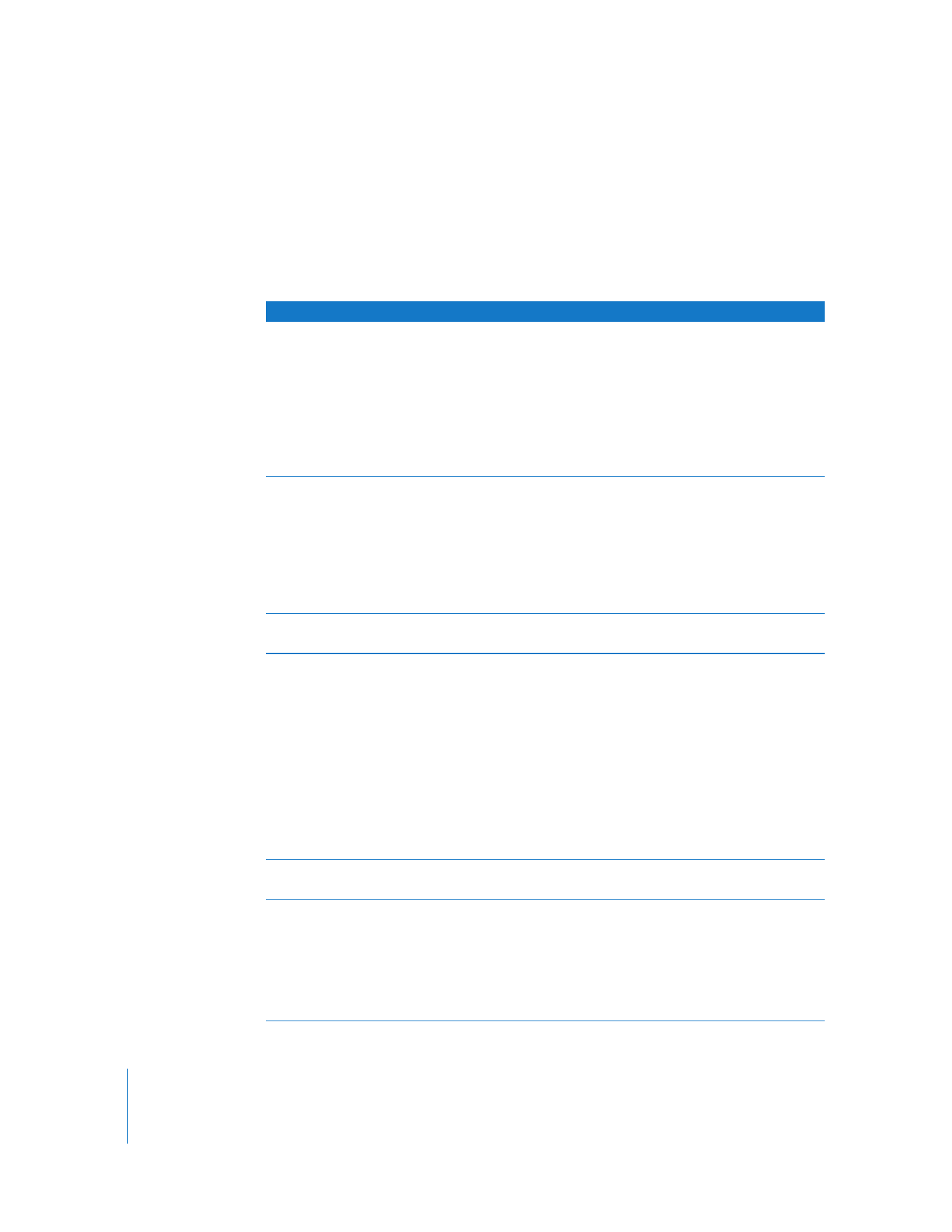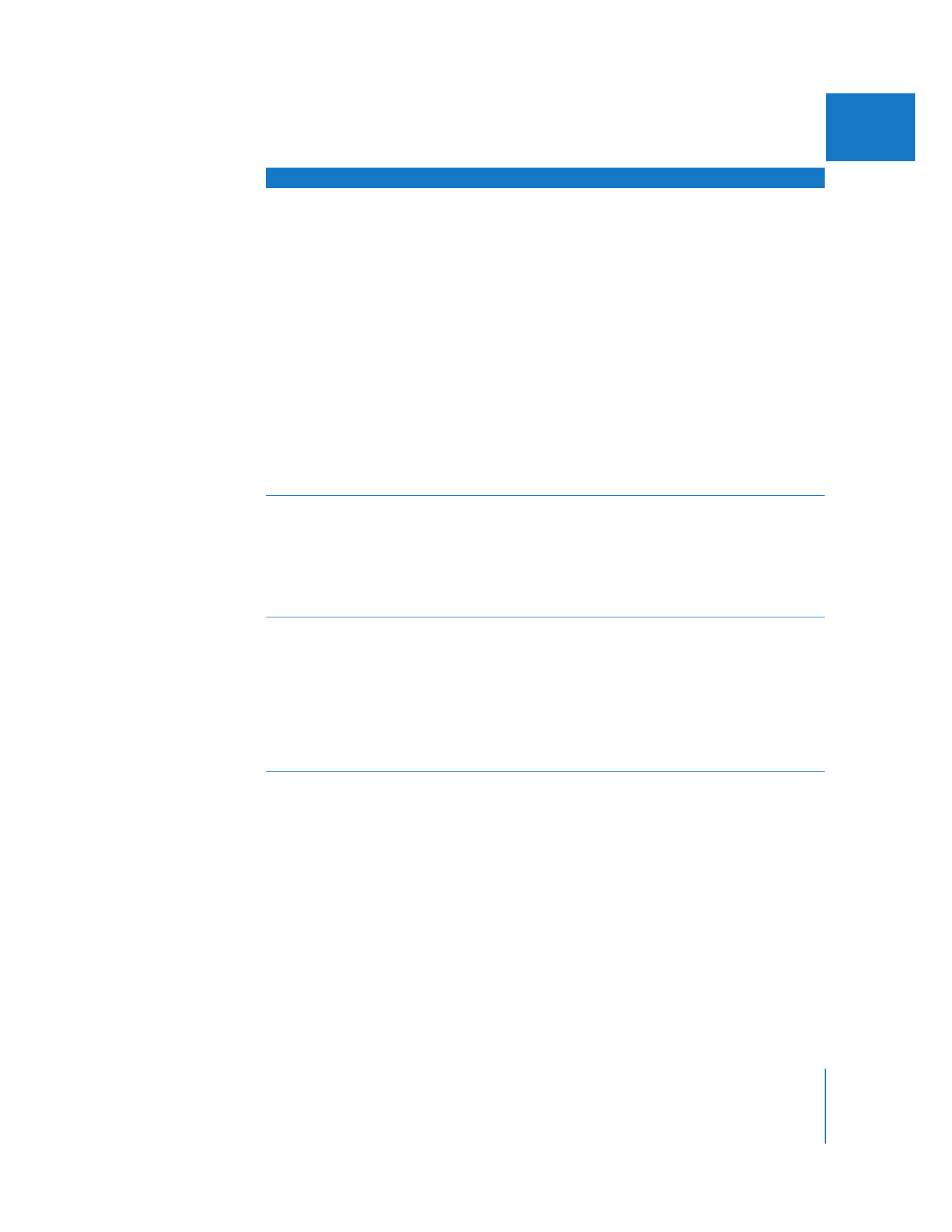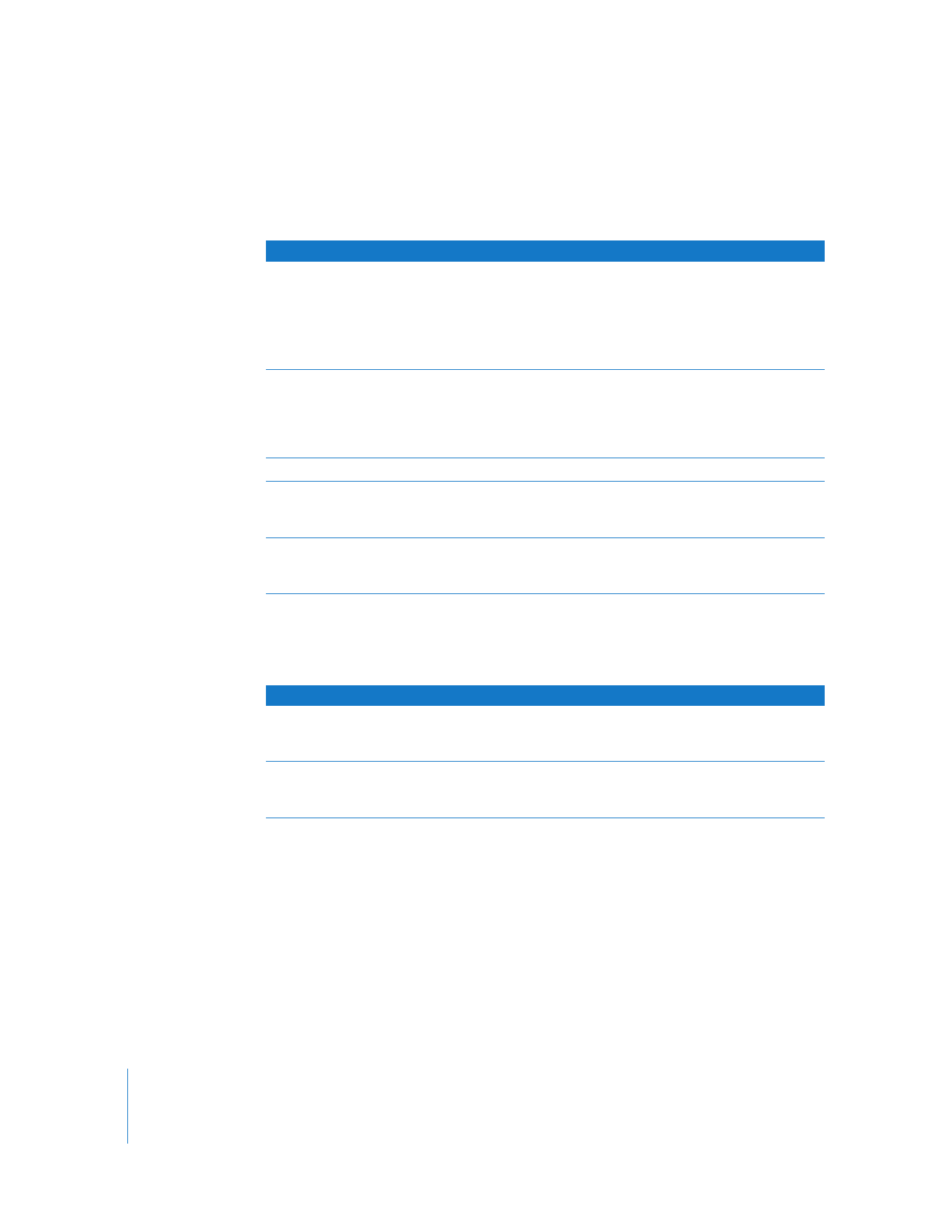
Matte Filters
Matte filters can be used by themselves to mask out areas of a clip, or to create alpha
channel information for a clip to make a transparent border so that the clip can be
composited against other layers. Matte filters can also be used to make further
adjustments to layers with key filters applied to them. For detailed information, see
“
Using Mattes to Add or Modify Alpha Channels
” on page 440.
Filter
Result
Eight-Point Garbage Matte
Generates an eight-point polygon you can use to crop out portions
of a clip. Eight-point controls allow you to define the polygonal
matte. The Smooth slider rounds off the corners of the polygon to
create rounder mattes. The Choke slider allows you to expand or
contract the matte, and the Feather slider allows you to blur the
edges of the matte. The Invert checkbox reverses what’s matted
and what’s transparent, and the Hide Labels checkbox hides the
number labels, which indicate which point of the matte
corresponds to which point control of the filter.
Extract
Produces a matte around the clip, similar to a luma key. A View
pop-up menu allows you to look at the source of the clip (with no
key applied), the matte created by the filter, the final matted image,
or a special composite of the source, matte, and final image for
reference. Use the Threshold, Tolerance, and Softness sliders to
adjust the matte. The Copy Result pop-up menu allows you to copy
the luma result to the RGB or alpha channel of your clip, and the
Invert checkbox allows you to invert the result.
Four-Point Garbage Matte
Works similarly to the Eight-Point Garbage matte, but creates a
four-point polygonal matte.
Image Mask
Takes the alpha channel or luma from another clip and uses it to
create a matte for the current clip. The Mask clip well allows you to
select the clip from which to take the alpha channel or luma values.
The Channel pop-up menu lets you choose whether to use the
clip’s alpha channel or luma level. The Invert checkbox allows you
to invert the resulting matte.
This filter is especially useful for taking custom edge masks that
you can create with any image editor and applying them to clips in
your sequence that you want to matte the edges out of. Unlike the
Travel Matte composite mode, the Image Mask filter attaches a
matte to the selected clip. You can use motion effects to move the
affected clip around, and the matte follows.
Mask Feather
Blurs the alpha channel of the clip by the amount you specify with
the Soft slider.
Mask Shape
Generates a mask shape to use to matte out the clip. You can
choose a diamond, oval, rectangle, or round rectangle from the
Shape pop-up menu. Use the Horizontal Scale and Vertical Scale
sliders to adjust the size and aspect ratio of your mask shape. The
Center point control allows you to specify the center of the mask,
and an Invert checkbox lets you reverse what’s transparent and
what’s solid.

Chapter 13
Installing and Managing Video Effects
249
II
Matte Choker
Usually used in conjunction with a key filter to manipulate the
edges of the key. The Edge Thin slider in the Matte Choker is often
used instead of the Edge Thin slider in the key filter because it can
produce a more realistic result.
When you use the Matte Choker, moving the Edge Thin slider to
the right gradually eats into marginally keyed areas of a filter,
eliminating fringe and smoothing out the edges of your matte.
When you move the Edge Thin slider to the right, marginally keyed
areas of a clip are expanded, spreading out the matte and filling in
holes in your foreground image that may have been created by the
key filter you’re using.
Matte Chokers always appear after the key filter in the Filters tab.
Matte Chokers are also commonly used in groups. The first Matte
Choker eliminates the fringing in the areas you want to key out,
but it may create holes in the foreground image. The second Matte
Choker, applied in reverse, fills in these holes to make the
foreground image as solid as possible. More Matte Chokers can
further fine-tune your key.
Soft Edges
Blurs the four edges of the clip individually by the specified
amount to create an old-fashioned vignetting effect. Each of the
four edges of your clip can be individually adjusted using the Left,
Right, Top, and Bottom sliders. The Dither and Gaussian checkboxes
are used to modify the quality of the blurred edge, and the Invert
checkbox allows you to switch between masking out the edges
and creating a hole in your image.
Widescreen
Generates a widescreen matte in the clip to create a letterboxed
image. The Type pop-up menu allows you to adjust the aspect ratio
of the top and bottom mask using standard academy ratios. The
Offset slider lets you move the affected clip up or down in order to
display the area that’s most important. The Border slider moves the
top and bottom of the letterbox inward by up to ten pixels. The
color controls allow you to specify a border color other than black
for the letterbox, and a Feather Edges checkbox blurs the edges of
the letterbox.
Filter
Result

250
Part II
Effects